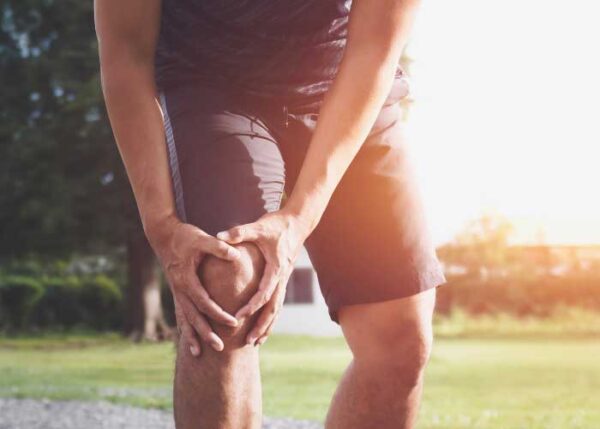Knee Ligament Surgeon

An ACL injury, or an injury to any of the ligaments in the knee rarely happen in isolation. Other structures in the knee can be damaged or torn, causing pain and instability. There are several different restoration and reconstruction techniques that can be used to restore the knee to a pre-injury condition. Doctor Riley J. Williams provides diagnosis as well as surgical and nonsurgical treatment options for patients in Manhattan, Brooklyn, New York City and surrounding areas who have sustained an ACL injury and need the best reconstruciton alternatives. Contact Dr. Williams’ team today!
What is knee reconstruction?
ACL (anterior cruciate ligament) and other knee ligament injuries seldom occur in isolation. Other structures in the knee can be injured, stretched, or torn. ACL surgery can require different reconstruction techniques to help restore knee the stability and lower extremity strength. Professional athletes and non-athletes alike in Manhattan, Brooklyn, New York City, NY and surrounding areas trust Dr. Riley J. Williams to determine the best treatment for their knee ligament injuries; Dr. Williams routinely utilizes the most up-to-date surgical techniques for their knee ligament reconstruction.

What is antero-lateral ligament (ALL) Reconstruction?
Antero-lateral ligament (ALL) is a lesser-known ligament on the outside of the knee that connects the lateral (outside) aspect of the femur (thighbone) to the top of the tibia (shinbone). This ligament is not present in everyone. It is speculated that around 80% of adults have an ALL. The ALL is partially responsible for maintaining knee stability during pivoting maneuvers. Injuries caused by pivots often involve the ACL; recent evidence has shown that concomitant ALL injuries may contribute to clinically significant knee instability in some patients. A torn or damaged ALL can be repaired or reconstructed using minimally invasive techniques. Tissue grafts are needed for ALL reconstruction. Autograft tissue taken from one of the as the hamstring tendons is a common graft source; allograft tendon sources can also be used. The graft is carefully placed in the same anatomic footprint as the original ALL and is secured in place by creating tunnels in the tibia and femur. After surgery, patients can stand, walk, and place weight on the knee to their tolerance. It is advised to use crutches for the first 2 weeks, or until the patient feels more comfortable and stable walking unassisted. ALL reconstruction is often done in conjunction with ACL reconstruction, so the rehabilitation and recovery protocol for ACL reconstruction is typically followed.
What is lateral extra-articular tenodesis (LET)?
Lateral extra-articular tenodesis (LET) is a specialized procedure performed for patients who suffer anterior knee instability following an injury to the ACL and the anterolateral ligament complex. Injury to multiple ligaments in this complex or repeated injury to the complex can result in instability and laxity, or excessive flexibility. LET is an extra-articular procedure that aids in preventing anterior knee instability during pivoting activities. LET is performed most frequently in conjunction with ACL reconstruction in hyperlax individuals, skeletally immature individuals and individuals undergoing revision ACL reconstruction. The iliotibial band Tenodesis and the LET are equivalent.
The LET operation is an open surgery: during this procedure, the iliotibial band (ITB) is exposed near the knee joint. The distal insertion of the ITB is preserved and a 1 cm wide by 10-12 cm strip of tissue is harvest. The ITB strip is passed under the lateral collateral ligament (LCL) and secured in place on the distal lateral femur above the knee joint. The orientation of the LET mimics that of the ACL graft and adds further strength to the knee stabilizing construct. As this procedure typically accompanies ACL reconstruction, typical postoperative rehabilitation protocols are followed. Crutch use is recommended for two weeks, and weight-bearing activities are progressed subsequently. The goal of LET or lateral extra-articular tenodesis is to retain the patient’s full range of motion while increasing stability and preventing further injury to the anterolateral complex of the knee. ITB tenodesis may be indicated if the patient is at a high-risk of retearing the ACL, such as athletes participating in contact supports, or individuals who participate in activities involving frequent pivots, turns, or jumps.
A return to full athletic activities is expected 6-8 months following LET / IT band Tenodesis.
For more information regarding ACL surgery or the different types of ACL reconstruction including ALL, LET and IT Band tenodesis, please contact the office of Riley J. Williams, MD, orthopedic knee surgeon serving Manhattan, Brooklyn, New York City, NY and surrounding areas.
